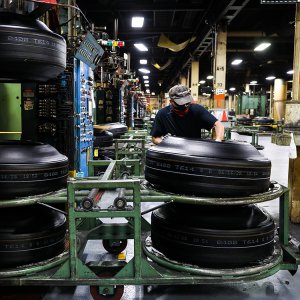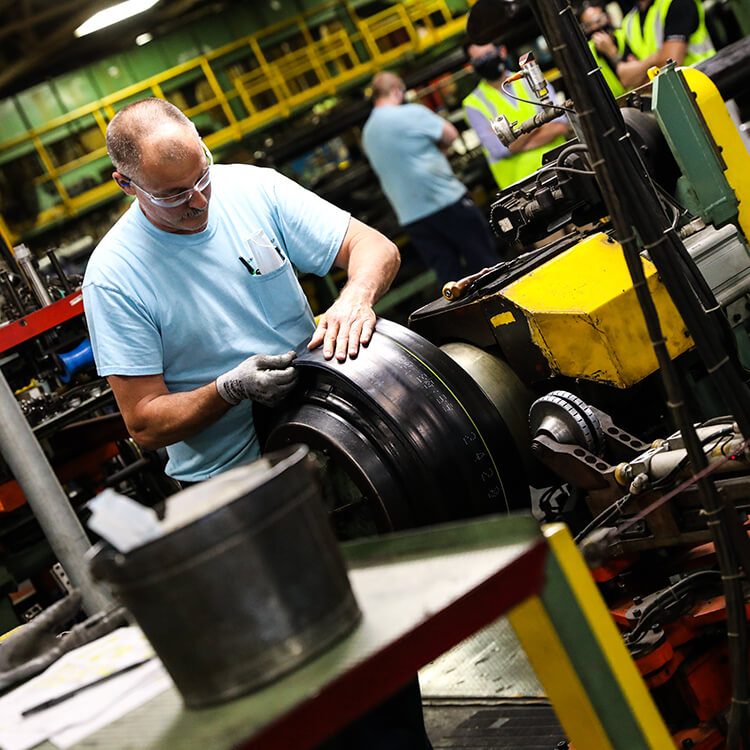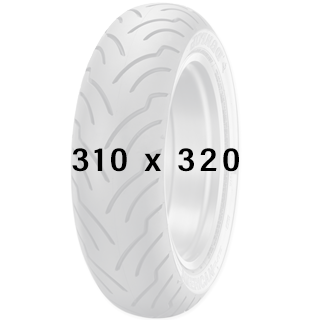How Are Motorcycle Tires Made?
Motorcycle tires are one of the most critical components protecting the rider from the road. Still, it’s easy to take for granted just how much effort and technology go into their design and manufacturing.
Motorcycle Tire Structure & Construction

Motorcycle tire materials are made with a combination of rubbers, chemicals, and other construction materials. Rubbers can be natural or synthetic, both used for their own unique properties.
Motorcycle tires can be made with an array of different products like nylon, cotton, polythene, Kevlar, silica, or steel wires. There are varying sizes, designs, and treads for different uses and applications.
Each material brings its own properties to the construction process and the tire’s functionality and performance.
Motorcycle tires fall under two main types. These are bias-ply or cross-belt tires and radial tires. Until the 1970s, most bikes on the roads rolled on bias-ply tires.
However, as technology progressed, a need for improved speed and mileage meant tires must offer enhanced performance. For this reason, manufacturers went on to develop radial motorcycle tires.
Ultimately, bias tires are suitable for riding at moderate speeds, for motorcycles carrying more weight, and for off-road durability. Meanwhile, radial tires are a better option for more powerful sports motorcycles. However, the general structure of both tire types is similar and consists of the tread cap, carcass, bead, and sidewalls. Learn more about this in our Bias vs Radial Motorcycle Tires article.
The tread cap makes direct contact with the road. It helps with stability, grip, noise, and performance in rain and snow.
Beneath is the carcass or the body of the tire, which gives it form and structure.
The layer of the material constituting the carcass extends down to the sides to form the tire’s sidewalls. It wraps around the bead, to a thick steel cable running through the tread. This design applies to both the bias-ply tires and radials.
You will find the tire’s information on the sidewalls, such as the size, load index, and speed rating.
The Motorcycle Tire Manufacturing Process
The process of making motorcycle tires goes through 5 stages, these are:
- Preparation
- Extrusion
- Assembly
- Curing
- Quality Control Checks
Safety professionals track each step of the process for consistency and compliance.
Stage 1: Preparation of Raw Materials
Manufacturing begins with processing large natural and synthetic rubber pieces through a conveyor. Here, the conveyor removes small chunks of unwanted materials present in the raw materials.
Different raw materials, such as polyester, aramid, Kevlar, nylon, etc., are similarly prepped in the material-cutting stage. The name for the combination of these materials is tire plies.
At Dunlop’s factory, the internal temperatures are strictly regulated to ensure consistent products at any season. Select materials including carbon black, silica, and sulfur get added to the mix for additional benefits and features. Different ratios and mixtures are created depending on the need of the tire. These materials are mixed in a giant heated vat while supervisors regulate pressure and closely monitor the process. The rubber compounds are thoroughly combined at the end of this stage.
Stage 2: Extrusion
During the extrusion phase, the warm rubber sheets are pushed through machines to create long rubber strips. This process may vary depending on the specific tire components being made. After this stage, the carcass and sidewalls are formed.
Stage 3: Assembly & Construction

The assembly of the carcass takes place on a large drum to shape the tire. First, the air-tight carcass layer is rolled together on the machine to squeeze out any air and adhere the layers together. Afterward it is rolled out and precisely measured, and then cut. Next, Steel cords are wound together into a hoop to form the bead. The hoop is inserted into the tire carcass, then, the rubber is rolled around the steel hoops to seal it in place. That’s mainly done with the rubber on the drum. When the carcass is completed, the exterior tread cap is added as soon as the internal layers form. After this, the tires are removed from the drum.
The result of this process is a plain rubber ring or green tire with no tread pattern or lettering. It looks a lot like a large rubber donut.
Stage 4: Curing
Curing refers to a chemical reaction or vulcanization that transforms the tire into an elastic state, binding the rubber materials to the cords and fusing many different layers together with other reinforcement.
The tire will then undergo controlled heat, pressure, and time in the curing chambers.
The tire now goes to the molding and curing area. Each green tire is set in a mold to give it a tread pattern and lettering for its model type. The tire then goes through the vulcanization process, where the sticky pliable rubber becomes harder and more durable. All the various layers and compounds are fused together and what comes next is a finished tire like the ones you see for sale.
Stage 5: Quality Control
A tire’s development process is subject to close monitoring from beginning to end. In combination with road test simulation, to ensure consistency and compliance with quality requirements, professionals manually inspect every single tire that is produced at Dunlop. Technicians will identify and reject any defects. During this process, laser measuring devices will ensure each tire’s construction and dimensions are perfect.
Are you interested in tires for your motorcycle fresh off the production line? Then use the Dunlop Motorcycle Tires location finder for a store near you. Our professional team will help you find the best tires for your motorcycle.










